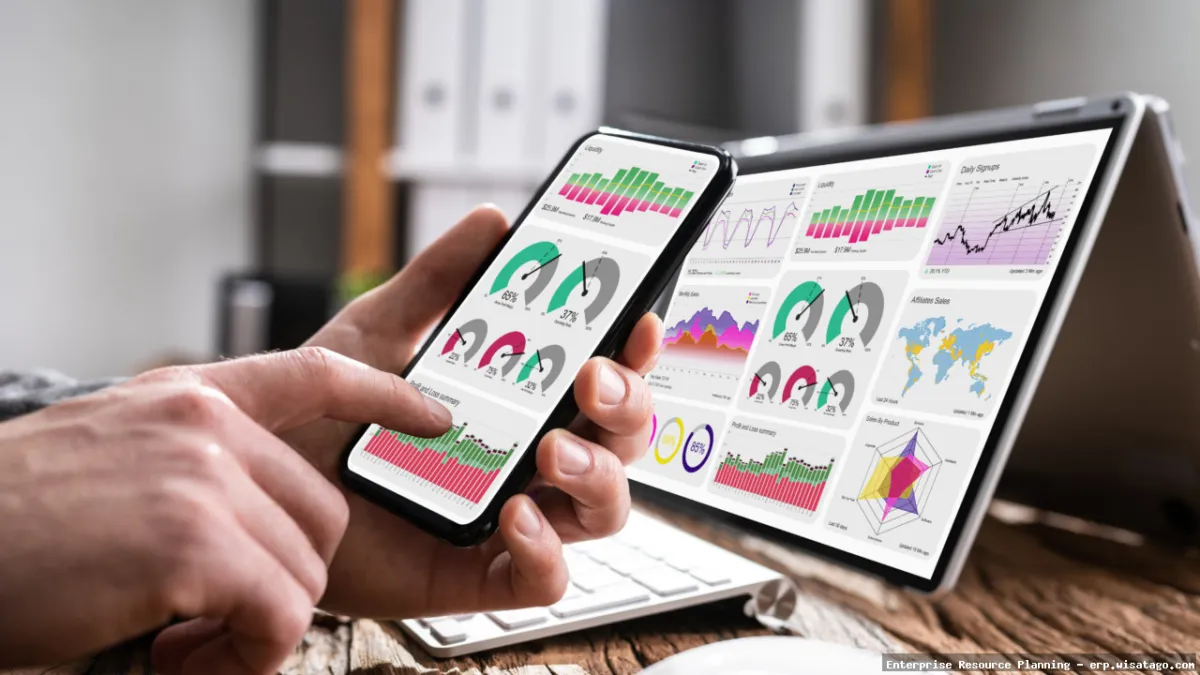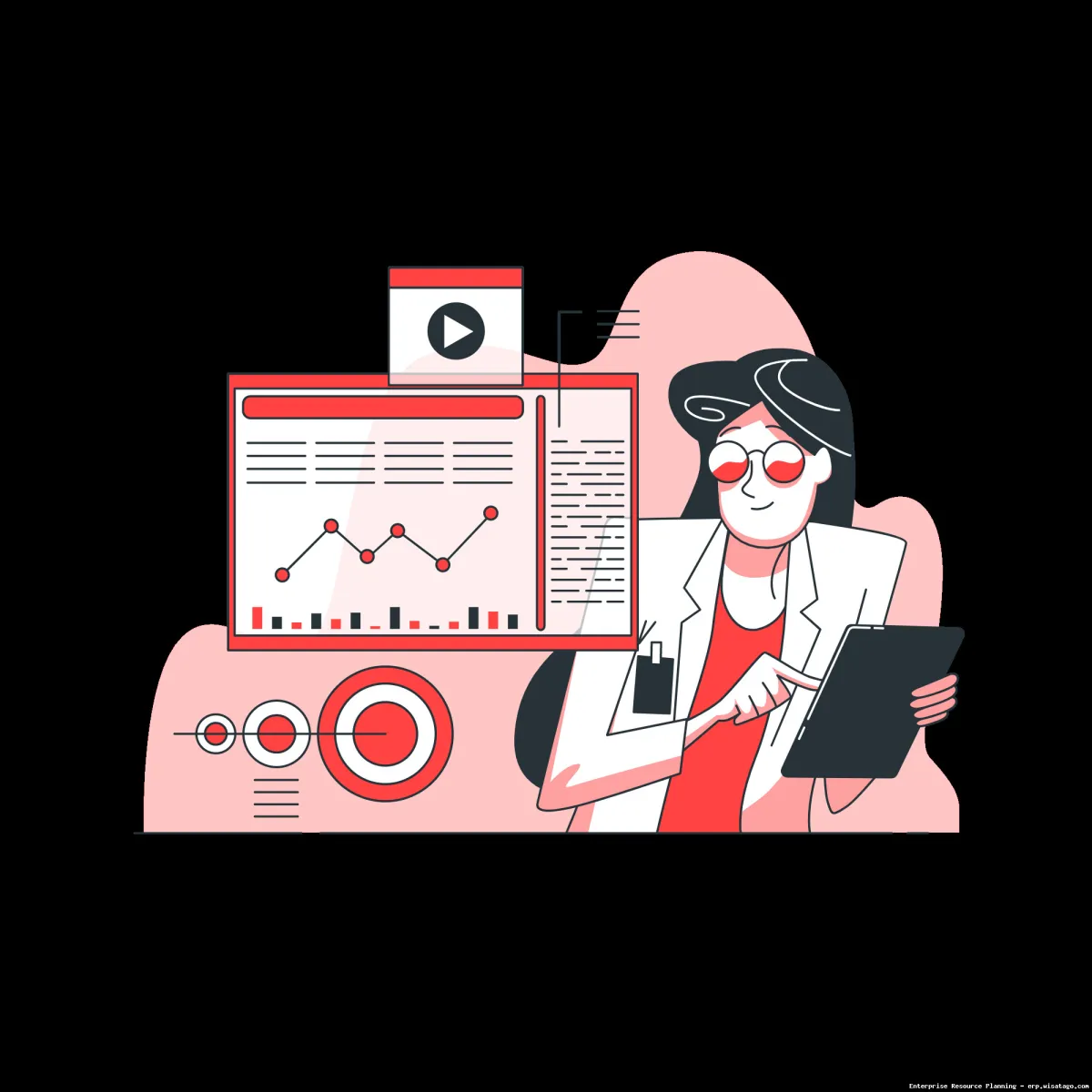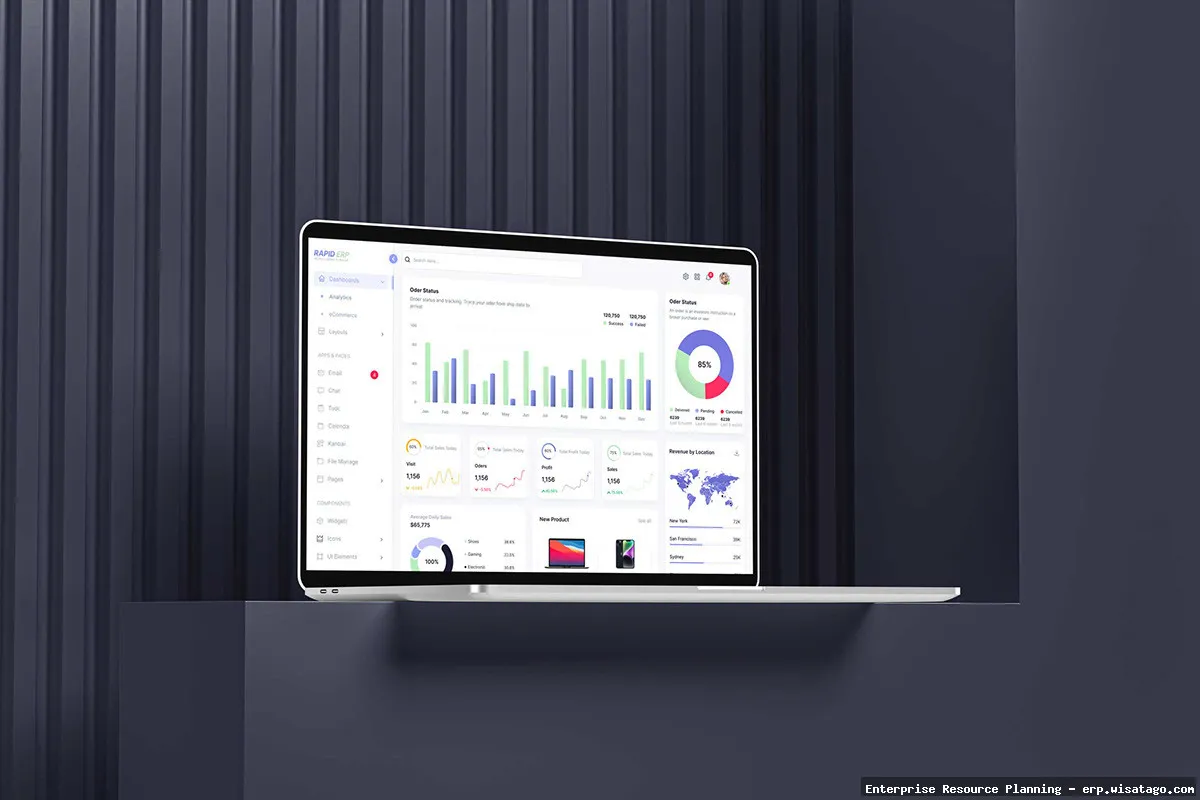Custom Dashboard Development For Executive ERP: Complete Guide, Features and Details
In today’s fast-paced business environment, executives need instant access to critical data to make informed decisions. Enterprise Resource Planning (ERP) systems are powerful tools for managing various aspects of a business, from finance and accounting to supply chain and manufacturing. However, the standard reports and dashboards that come with ERP systems often fall short of providing the specific, actionable insights that executives require. This is where custom dashboard development for executive ERP becomes essential.
Custom dashboards transform raw ERP data into visually appealing and easily digestible information. They allow executives to monitor key performance indicators (KPIs), identify trends, and proactively address potential issues. By tailoring dashboards to their specific roles and responsibilities, executives can gain a deeper understanding of their business operations and make data-driven decisions that drive growth and profitability. This goes beyond simply seeing the numbers; it’s about understanding the story the numbers are telling.

This article will provide a comprehensive guide to custom dashboard development for executive ERP. We’ll explore the benefits of custom dashboards, the key features to include, the development process, and best practices for ensuring success. Whether you’re considering implementing custom dashboards for the first time or looking to optimize your existing dashboards, this guide will provide valuable insights to help you unlock the full potential of your ERP system and empower your executive team.
Understanding the Need for Custom Executive ERP Dashboards
While standard ERP reports provide a wealth of data, they often lack the context and relevance needed by executives. They might be too detailed, too generic, or simply not presented in a way that facilitates quick understanding. Think of it like getting a raw ingredients list versus a beautifully plated meal. Both contain the same components, but one is far more appealing and readily consumable.
Limitations of Standard ERP Reports
Standard reports are generally designed to cater to a broad range of users and departments. As a result, they often include information that is irrelevant to executives, making it difficult to identify the key metrics that matter most. These limitations include:
- Lack of Customization: Standard reports offer limited customization options, making it difficult to tailor them to specific executive needs.
- Data Overload: They often contain too much information, making it difficult to identify the key insights.
- Static Presentation: Standard reports are typically static and lack the interactive features needed to explore data in more detail.
- Lack of Real-Time Data: Some standard reports are not updated in real-time, making it difficult to make timely decisions.
Benefits of Custom Executive ERP Dashboards
Custom dashboards address these limitations by providing a tailored view of ERP data that is specifically designed for executives. These dashboards offer a range of benefits, including:
- Improved Decision-Making: By providing executives with access to real-time, relevant data, custom dashboards enable them to make more informed decisions.
- Increased Efficiency: Executives can quickly identify key trends and issues, allowing them to focus their attention on the most important areas of the business.
- Enhanced Collaboration: Custom dashboards can be shared across the executive team, facilitating collaboration and alignment.
- Better Performance Monitoring: Executives can track progress against key performance indicators (KPIs) and identify areas where performance needs to be improved.
- Proactive Problem Solving: By identifying potential issues early on, executives can take proactive steps to mitigate risks.
Key Features of Effective Executive ERP Dashboards
A well-designed executive ERP dashboard should be visually appealing, easy to use, and provide actionable insights. It should also be tailored to the specific needs of the executive team. Here are some key features to consider:
KPI Tracking and Visualization
The primary purpose of an executive dashboard is to track key performance indicators (KPIs). These KPIs should be clearly defined and aligned with the organization’s strategic goals. The dashboard should provide visual representations of these KPIs, such as charts, graphs, and gauges, to make it easy for executives to understand performance trends at a glance.
Real-Time Data Updates
Executives need access to real-time data to make timely decisions. The dashboard should be connected to the ERP system and updated automatically as new data becomes available. This ensures that executives are always working with the most current information.

Drill-Down Capabilities
While the dashboard should provide a high-level overview of key metrics, executives should also be able to drill down into the underlying data for more detailed analysis. This allows them to understand the root causes of performance trends and identify areas for improvement.
Alerts and Notifications
The dashboard should be configured to send alerts and notifications when KPIs fall outside of acceptable ranges. This allows executives to proactively address potential issues before they escalate.
Role-Based Access Control
Different executives have different information needs. The dashboard should provide role-based access control to ensure that each executive only sees the data that is relevant to their role and responsibilities. This helps to prevent information overload and ensures that executives can focus on the metrics that matter most to them.
Mobile Accessibility
In today’s mobile-first world, executives need access to data from anywhere, at any time. The dashboard should be accessible on mobile devices, such as smartphones and tablets, allowing executives to stay informed even when they are on the go.
The Custom Dashboard Development Process
Developing a custom dashboard for executive ERP involves a structured process that includes planning, design, development, testing, and deployment. Each stage is critical to ensuring the final product meets the needs of the executive team.
Planning and Requirements Gathering
The first step is to clearly define the objectives of the dashboard and gather requirements from the executive team. This involves identifying the key KPIs that need to be tracked, the data sources that will be used, and the desired level of detail. It’s crucial to have open communication and collaboration with the executives to ensure their needs are fully understood.
Dashboard Design and Prototyping
Once the requirements are gathered, the next step is to design the dashboard layout and create a prototype. This involves selecting the appropriate charts and graphs to visualize the data, designing the user interface, and defining the navigation flow. The prototype should be reviewed by the executive team to ensure that it meets their needs and expectations.

Data Integration and Development
After the design is approved, the next step is to integrate the dashboard with the ERP system and develop the necessary code. This involves extracting data from the ERP system, transforming it into a usable format, and loading it into the dashboard. The development process should follow best practices for security, performance, and scalability.
Testing and Quality Assurance
Before deploying the dashboard, it is essential to thoroughly test it to ensure that it is working correctly and that the data is accurate. This involves testing the dashboard on different devices and browsers, verifying the data integrity, and ensuring that the performance is acceptable. Quality assurance is key to preventing errors and ensuring user satisfaction.
Deployment and Training
Once the dashboard has been tested and approved, it can be deployed to the executive team. This involves installing the dashboard on the appropriate servers, configuring the security settings, and providing training to the users. Training should focus on how to use the dashboard effectively and how to interpret the data. Many businesses are seeking operational improvements, so Advanced Erp Solutions can offer a competitive edge
Choosing the Right Tools and Technologies
Several tools and technologies can be used to develop custom dashboards for executive ERP. The choice of tools will depend on the specific requirements of the project, the technical expertise of the development team, and the budget. Here are some popular options:
Business Intelligence (BI) Platforms
BI platforms, such as Tableau, Power BI, and Qlik, provide a comprehensive suite of tools for data visualization, analysis, and reporting. These platforms offer a wide range of features, including drag-and-drop dashboard design, data integration capabilities, and advanced analytics. They are a good choice for organizations that need a powerful and flexible solution.
Custom Development Frameworks
Custom development frameworks, such as React, Angular, and Vue.js, allow developers to build dashboards from scratch. This approach provides the greatest flexibility and control over the design and functionality of the dashboard. However, it requires more technical expertise and can be more time-consuming.
ERP-Specific Dashboard Tools
Some ERP vendors offer their own dashboard tools that are specifically designed to integrate with their systems. These tools often provide pre-built dashboards and reports, as well as customization options. They are a good choice for organizations that want a tightly integrated solution.

Best Practices for Successful Custom Dashboard Implementation
Implementing custom dashboards for executive ERP can be a complex project. Here are some best practices to ensure success:
Involve Executives in the Process
Executive involvement is critical to the success of the project. Executives should be involved in the planning, design, and testing phases to ensure that the dashboard meets their needs and expectations.
Focus on Key Performance Indicators (KPIs)
The dashboard should focus on the most important KPIs that are aligned with the organization’s strategic goals. Avoid including too much information, as this can lead to information overload. Managing these complex processes efficiently often requires specialized software, ERP being a prime example of such a system
.
Keep it Simple and Intuitive
The dashboard should be easy to use and understand. Use clear and concise language, and avoid using technical jargon. The user interface should be intuitive and easy to navigate.
Provide Training and Support
Provide training and support to the executive team to ensure that they know how to use the dashboard effectively. This will help to maximize the value of the investment.
Continuously Monitor and Improve
The dashboard should be continuously monitored and improved based on feedback from the executive team. This will ensure that it remains relevant and useful over time.
Conclusion
Custom dashboard development for executive ERP is a valuable investment that can empower executives to make better decisions, improve efficiency, and drive business growth. By understanding the benefits of custom dashboards, the key features to include, the development process, and the best practices for implementation, organizations can unlock the full potential of their ERP systems and achieve their strategic goals. Remember that the key is to tailor the dashboards to the specific needs of your executive team and to continuously monitor and improve them over time.

Conclusion
In conclusion, custom dashboard development for executive ERP systems offers a powerful pathway to enhanced decision-making and improved organizational performance. By tailoring data visualization and reporting to the specific needs and priorities of executive leadership, companies can unlock valuable insights hidden within their ERP data. This allows for more proactive identification of opportunities, quicker responses to challenges, and ultimately, a more agile and competitive business strategy. A well-designed, custom executive dashboard transcends the limitations of generic reporting, providing a clear, concise, and actionable view of the key performance indicators (KPIs) that drive success.
The journey to implementing a successful custom executive ERP dashboard requires careful planning, a deep understanding of business objectives, and a collaborative approach between executives, IT professionals, and potentially, external consultants. Investing in this process, however, yields significant returns in the form of improved strategic alignment, enhanced operational efficiency, and a more informed executive team. If you’re ready to transform your executive decision-making and unlock the full potential of your ERP system, we encourage you to explore how custom dashboard development can benefit your organization. Contact us today to discuss your specific needs and discover how we can help you build a dashboard that empowers your leadership team to achieve its goals.
Frequently Asked Questions (FAQ) about Custom Dashboard Development for Executive ERP
What are the key benefits of developing a custom dashboard specifically for executive-level ERP users compared to using the standard ERP dashboard?
Developing a custom dashboard for executive ERP users offers several advantages over relying solely on the standard ERP dashboard. Standard dashboards often present a broad overview of data, which can be overwhelming for executives needing concise, high-level insights. A custom dashboard allows for the curation of key performance indicators (KPIs) directly relevant to strategic decision-making. This includes tailored visualizations, such as trend analysis charts and exception reporting, that immediately highlight critical areas requiring attention. Furthermore, a custom dashboard can integrate data from multiple sources, both within and outside the ERP system, providing a holistic view of the business. By focusing on the specific information executives need, a custom dashboard enhances their ability to monitor performance, identify opportunities, and mitigate risks more effectively, ultimately leading to improved strategic outcomes.
How much does it typically cost to develop a custom dashboard for an Executive ERP system, and what factors influence the overall price?
The cost of developing a custom dashboard for an Executive ERP system can vary significantly, typically ranging from $5,000 to $50,000 or more. Several factors influence the overall price. The complexity of the dashboard, including the number of KPIs, data sources, and required visualizations, is a primary driver. Integration complexity, such as connecting to external databases or cloud services, adds to the cost. The level of customization, including bespoke features and user interface (UI) design, also impacts the price. The development team’s expertise and location play a role as well. Engaging a highly experienced team with specialized skills will generally be more expensive. Finally, ongoing maintenance and support costs should be considered. It’s recommended to get detailed quotes from multiple vendors to understand the costs involved based on your specific requirements and ERP system.
What are the essential steps involved in the custom Executive ERP dashboard development process, from initial planning to final deployment and user training?
The custom Executive ERP dashboard development process typically involves several essential steps. First, a thorough requirements gathering and planning phase is crucial. This involves understanding the executive team’s specific needs, identifying key performance indicators (KPIs), and defining data sources. Second, the dashboard design and prototyping stage focuses on creating wireframes and mockups to visualize the dashboard layout and functionality. Third, the development and integration phase involves building the dashboard and connecting it to the ERP system and other relevant data sources. Fourth, rigorous testing and quality assurance are performed to ensure data accuracy, performance, and usability. Fifth, after successful testing, the dashboard is deployed to a production environment. Finally, comprehensive user training and documentation are provided to ensure executives can effectively utilize the new dashboard. Ongoing maintenance and support are also critical for addressing any issues and implementing future enhancements.